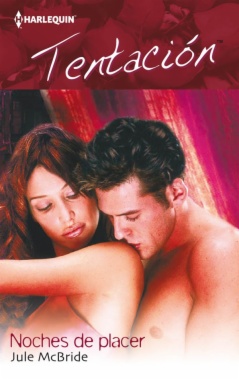
Estás filtrando por
Se encontraron 628830 resultados en recursos

En cualquier sitio menos allíPara una abogada ambiciosa como Lisa Mendoza, aquel trabajo temporal en la pequeña ciudad de Angel Eye, Texas, no era más que un ligero desvío en sus planes de futuro. Pero entonces se encontró con el guapísimo Quinn Sutton... y sus planes empezaron a cambiar porque, a pesar de su decisión de no involucrarse con el sheriff de la ciudad, lo cierto era que lo encontraba sencillamente irresistible...¿Y el sheriff Quinn? Sí, él también sentía la atracción... y también tenía dudas. Ya había conocido el dolor de enamorarse de una mujer que obedecía a su cabeza en lugar de a su corazón, pero tenía la sensación de que las cosas con Lisa podrían ser diferentes.
Fuente:
Digitalia
Formatos de contenido:
Libros
Compartir este contenido
Donde tú me lleves
Copia el enlace o compártelo en redes sociales

Luz de luna
La receta de la felicidad: ir mezclando los ingredientes a medida que se recorre el camino Kelly Matlock era una sous-chef al alza, pero el inesperado desmayo que sufrió en su lugar de trabajo fue para ella una llamada de atención. Desilusionada y quemada, decidió retirarse durante un tiempo a casa de su hermana Jillian en Virgen River para descansar y poner las cosas en perspectiva.Estaba bien entretenerse en el jardín de Jill y cocinar variedades autóctonas de hortalizas, pero no podía haber un lugar más distinto a San Francisco que Virgen River, hasta tal punto que Kelly estaba empezando a encontrarse casi demasiado relajada… hasta que conoció a Lief Holbrook.
Fuente:
Digitalia
Formatos de contenido:
Libros
Compartir este contenido
Luz de luna
Copia el enlace o compártelo en redes sociales

Aromas de seducción
Una venganza muy peligrosa. El marqués Rafael de las Carreras había viajado hasta Nueva Zelanda con un único propósito: vengarse de la poderosa y odiada familia Saxon y reclamar lo que le correspondía por derecho. Seducir a Caitlyn Ross, la joven y hermosa vinicultora de los Saxon, era un juego de niños para él y la manera perfecta de conseguir lo que quería. Pero a medida que fue conociendo a Caitlyn, su encantadora mezcla de inocencia y pasión le hizo preguntarse si no sería él quien estaba siendo seducido.
Fuente:
Digitalia
Formatos de contenido:
Libros
Compartir este contenido
Aromas de seducción
Copia el enlace o compártelo en redes sociales

La tentación del vikingo
Ella ponía a prueba su resolución… El guerrero vikingo Ragnar Olafsson había sido testigo de cómo su mejor amigo había reclamado a la mujer que más deseaba. Solo había un modo de ahogar la profunda oscuridad que habitaba en su interior: convertirse en un despiadado guerrero. Elena había sido hecha prisionera y Ragnar lo había arriesgado todo por salvarla. Aislados, sin nada más que su respectiva compañía, cada deseo, cada mirada, cada caricia se volvería de repente prohibida. Elena podría haber tentado a un santo, y el pecador Ragnar sabía que no iba a poder aguantar mucho tiempo…
Fuente:
Digitalia
Formatos de contenido:
Libros
Compartir este contenido
La tentación del vikingo
Copia el enlace o compártelo en redes sociales

Mi alma gemela (Mo anam cara) - Ganadora II Premio Digital
¿Será capaz Alicia de enfrentarse a todo por conservar al hombre al que ama de forma tan desesperada? Alicia tiene una vida cómoda. Demasiado cómoda, pero tampoco tiene tiempo de pensar en ello. . . hasta que un día aciago, en un repentino e inesperado accidente fallece su mejor amiga, dejándole como recuerdo un misterioso regalo: una promesa que debió cumplir cuando ambas tenían dieciocho años. Deberá partir rumbo a Irlanda para encontrar lo que había perdido. Pero ¿realmente había perdido algo Alicia? Por los avatares del destino, acaba en un pequeño pueblo de las Highlands escocesas, junto al...
Fuente:
Digitalia
Formatos de contenido:
Libros
Compartir este contenido
Mi alma gemela (Mo anam cara) - Ganadora II Premio Digital
Copia el enlace o compártelo en redes sociales

Un hombre de ley
¿Qué tenían en común el robo a una diligencia, una antigua diosa del amor y las Montañas Rocosas? El sheriff Spence Harding sabía que el eje central de todos los conflictos que estaban surgiendo era Maggie Peyton, potencial ladrona de museos y poseedora de las piernas más bellas de Colorado. Pero Spence sabía también que debía olvidarse de la bella licenciada universitaria porque sólo le causaría problemas. La primera vez que Maggie vio a Spence Harding él estaba en el suelo y su diligencia estaba siendo asaltada. Desde entonces las cosas no habían mejorado. El sheriff estaba empeñado en que ella no...
Fuente:
Digitalia
Formatos de contenido:
Libros
Compartir este contenido
Un hombre de ley
Copia el enlace o compártelo en redes sociales

Noches de placer
Noches de placer AQUELLO ERA TRABAJO. . . ¿O SOLO PLACER? Edison Lone era un tipo solitario capaz de descifrar cualquier tipo de código secreto. Sin embargo, estaba teniendo muchos problemas para entender el erótico diario de la sospechosa Selena Silverwood. Leer las ardientes fantasías de una secretaria de aspecto tan normal era más de lo que cualquier hombre podía soportar. Edison no había podido evitar sentir por ella algo parecido al amor. Ahora, además, tendría que salir con ella para intentar sacarle, ayudado por su encanto, los secretos que se suponía que ocultaba. . .
Fuente:
Digitalia
Formatos de contenido:
Libros
Compartir este contenido
Noches de placer
Copia el enlace o compártelo en redes sociales

Un príncipe libertino
Era el hombre más libertino del reino de Kitzinia… si no del mundo entero Adriana Righetti, secretaria personal de palacio, no era ajena al escándalo, pero el príncipe Pat llevaba el libertinaje a un nivel desconocido. Sus infames relaciones con mujeres de mala fama iban más allá de lo escandaloso. Su último encargo era mantener a raya al príncipe, pero evitar que saliera en la prensa antes de la boda de su hermano, el príncipe heredero, era una misión imposible.
Fuente:
Digitalia
Formatos de contenido:
Libros
Compartir este contenido
Un príncipe libertino
Copia el enlace o compártelo en redes sociales

La esposa de su hermano
Realeza rebelde. 1º de la saga. Saga completa 3 títulos. Era complicado. Solo hizo falta un beso de la viuda de su hermano para despertar la llama en el corazón de A. J. Rahia y convencerlo para aceptar el trono. La tradición obligaba a que el príncipe convertido en productor de Hollywood se casara con la esposa de su hermano, pero… ¿podría aceptar como suyo el hijo que estaba en camino? Lani Rahia estaba atrapada entre dos hombres: su difunto esposo y el futuro rey. Si contaba la verdad sobre uno, ¿perdería al otro? Ya se había visto antes apresada en un matrimonio de conveniencia. Esta vez no...
Fuente:
Digitalia
Formatos de contenido:
Libros
Compartir este contenido
La esposa de su hermano
Copia el enlace o compártelo en redes sociales

A tu lado
Tenía que convencerla de que sus dudas sobre el amor habían desaparecido… La noticia de que iba a ser padre dejó de piedra al ejecutivo Trent Crosby. Después de haber sido engañado por varias mujeres, no podía confiar en Rebecca Holley, la “madre” de su hijo. Pero cuando la bella enfermera que había recibido por error el esperma de Trent se negó a llegar a un acuerdo con él, Trent le propuso un matrimonio de conveniencia. Y no pasó mucho tiempo antes de que aquel ejecutivo desengañado del amor volviera corriendo a casa cada día para estar con Rebecca… y tenerla en sus brazos. Pero entonces ocurrió...
Fuente:
Digitalia
Formatos de contenido:
Libros
Compartir este contenido
A tu lado
Copia el enlace o compártelo en redes sociales
Selecciona las Colecciones en las que vas a añadir el contenido
Para consultar los contenidos añadidos busca la opción Tus colecciones en el menú principal o en Mi perfil.
